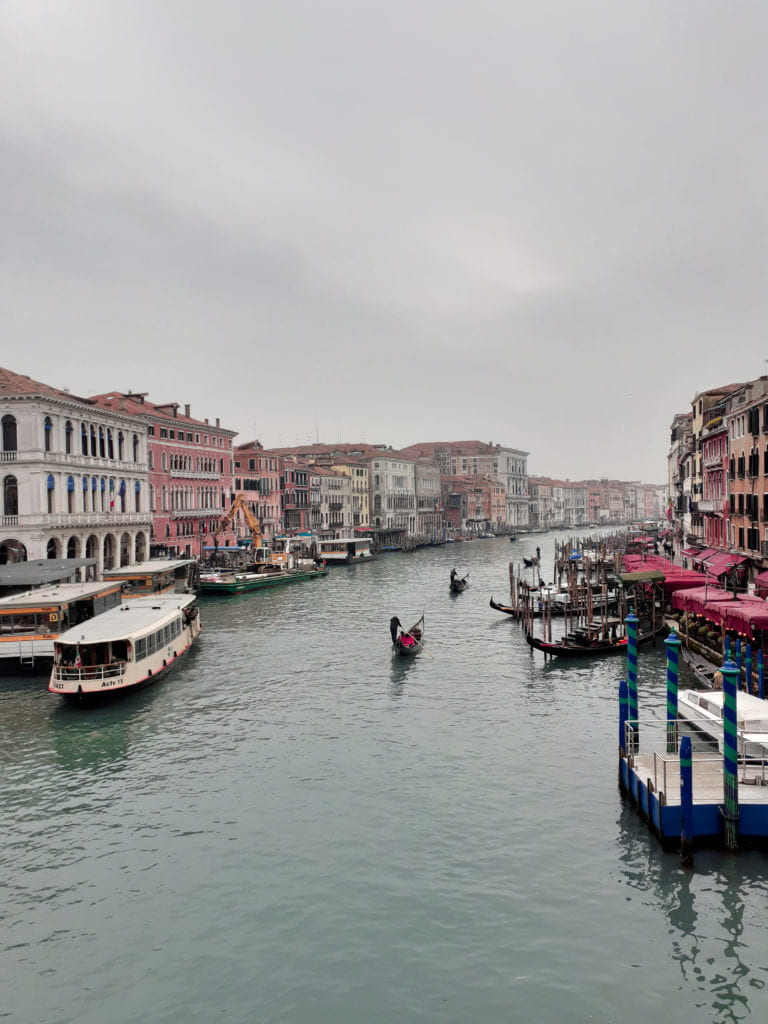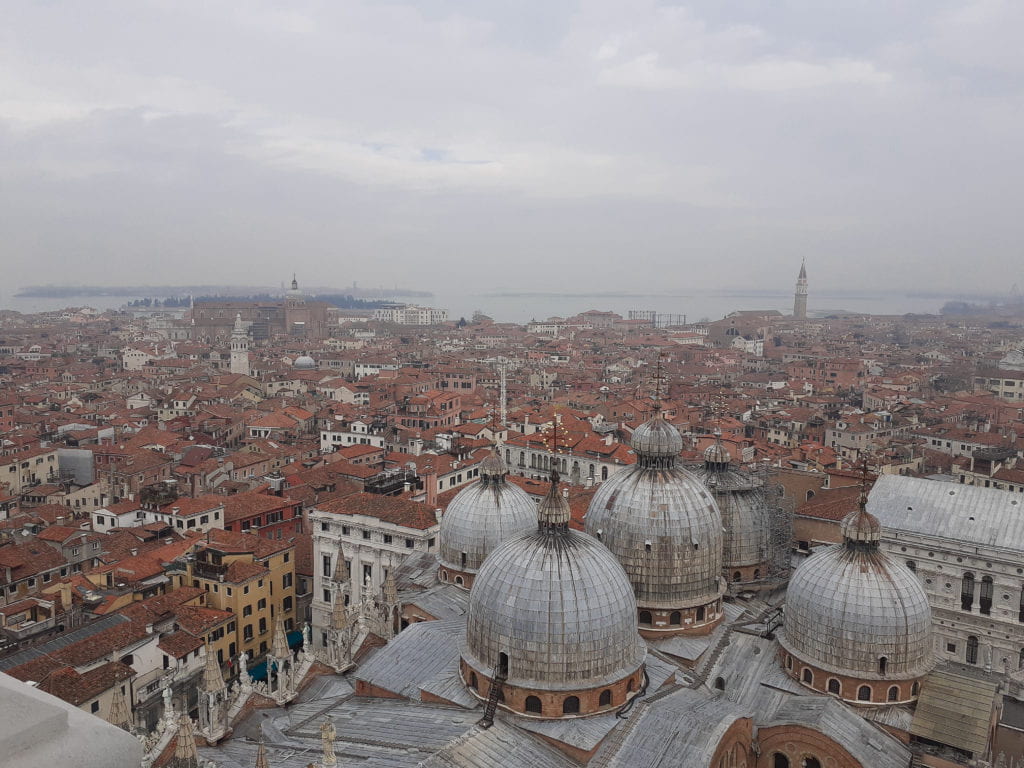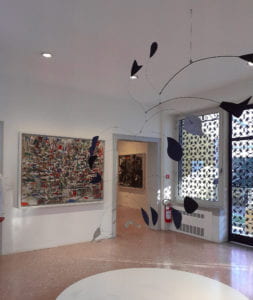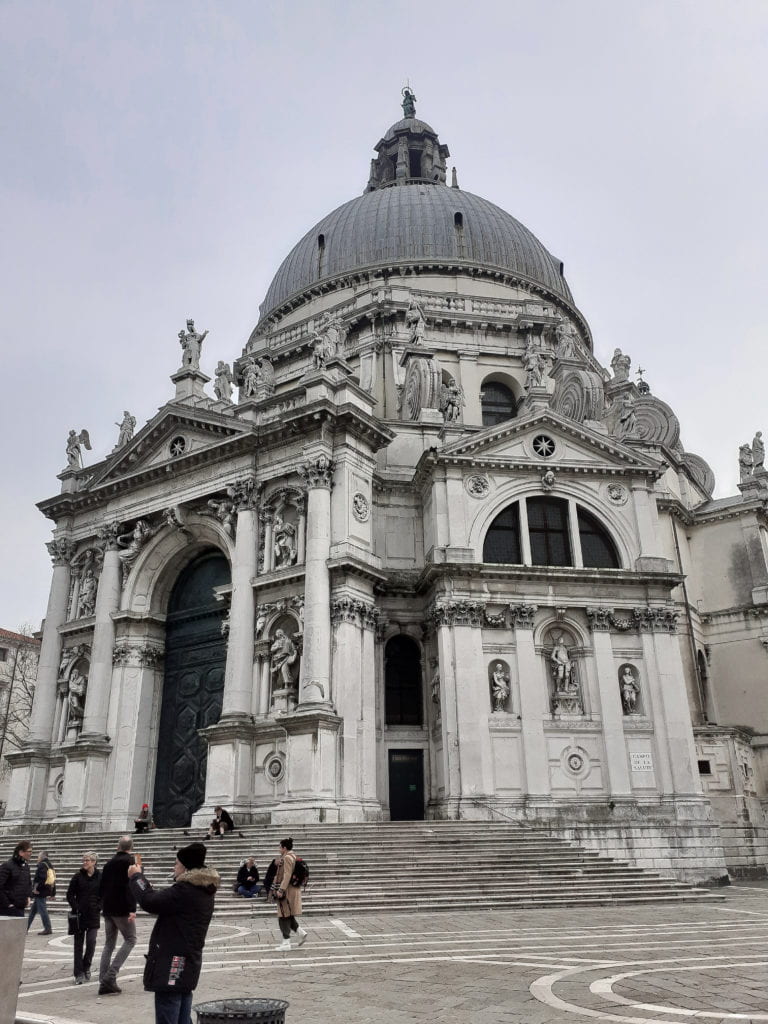Friday, February 7, 2020 | Written by Blanca
Venice is a destination I’ve always wanted to visit. Something about the novelty and intrigue of a city on water had made it seem, in my mind, the absolute epitome of the confluence of human imagination, engineering, and creativity. What could be more romantic, more elegantly surreal, than azure canals hugging the bases of Venetian Gothic and Renaissance buildings, so full of diverse architectural character and unique elegance, stalwart in their foundations but delicately ornate in the balustrades and trefoil arches high above? (Spoiler alert: nothing.) Having experienced Venice for a weekend, during which time I saw both major tourist attractions and hidden gems tucked behind narrow alleyways and winding streets, I can confidently confirm that my prior notions regarding one of Europe’s most illustrious cities were, in fact, correct. Call me a romantic, but Venice was nothing short of magical.

Despite only being there for two and a half days, a fleeting amount of time when considering all that it has to offer, I saw Venice at every hour: first at dusk, upon my arrival, as the sunset cast a rosy glow over the city; then during the day, the streets abuzz with tourists; at the crack of dawn, tranquil under a hazy morning mist; and finally at night, when the twinkle of string lights over shop-lined streets was punctuated every once and a while by the mystique of dark passageways (I don’t recommend going into these alone at night, not only for obvious safety reasons, but also because many streets simply stop at the edge of a canal without warning, which could result in a rather wet and unpleasant surprise if you don’t know to stop walking). The weekend afforded us a range of weather, including foggy skies that shrouded the city in an ethereal veil, a light drizzle that threatened, unsuccessfully, to rain on our parade (pun intended), and the golden Italian sun, timid at first, which gilded the elegant palaces lining the Grand Canal and made the waters themselves glimmer like gold leaf. Like Venice at different times of day, Venice in different types of weather makes for completely different experiences, all just as beautiful and as magical as the others.
I could gush about Venice, as I have been doing for a while now, for days, but even then I don’t think I could adequately articulate all its marvels—and how could I, if I didn’t even get to see them all myself in the short time I had? Nevertheless, here are some things that I did see, which are the highlights of my trip. ( And if given the chance, I one hundred percent recommend you visit too.)
St Mark’s Campanile
St Mark’s Campanile is the bell tower of St Mark’s Basilica, located in the bustling Piazza San Marco. None of the other buildings in Venice are particularly tall, so standing at about 100 meters, the campanile is rather imposing. For the same reason, the belfry at its top offers spectacular views of the city below, which you can see for an €8.00 admission fee. The spot where Galileo once viewed the skies, the campanile provides stunning vantage point for a panoramic view of Venice’s signature red rooftops complementing the expansive blue Venetian Lagoon. I stayed at the top for an hour, until the wind and cold made staying a bit unbearable, completely in awe and trying to commit the entire scene to memory.

Vaporetto Ride

A vaporetto is a Venetian public waterbus, which has multiple lines that travel in and around Venice. We hopped on the vaporetto on our second afternoon, and it brought us up the Grand Canal. Even on an overcast day, seeing the restaurants, shops, and stately palaces lining the Grand Canal was an unforgettable experience and a great way to view the sides of Venice you can’t see from the streets.
Major Tourist Attractions at Dawn
On Sunday morning, the rest of my travel group headed off to Florence for a day trip, but I, absolutely captivated by Venice, decided to remain. The port was set to be closed starting at 7AM that morning to defuse a recently discovered WWII-era bomb, taking all trains out of service for a handful of hours, so they departed before the sun even rose. Though not trying to catch a last-minute train off the island before a bomb was to be defused (which, looking back, was pretty absurd in itself), I still blearily dragged myself out of bed for an exciting day ahead. Venice is a tourist city, and major landmarks had been positively packed when we visited during the two days prior, so I thought going at the crack of dawn would be the perfect opportunity to see major tourist attractions—they’d still be major, just not as tourist-y, and I was excited to see a more peaceful side of the best-known attractions in Venice.
My first stop was the Rialto Bridge, on which I’d already crossed over the Grand Canal several times. In the early hours of the morning, however, the bridge was almost entirely empty, save for a few other early risers. Accompanied by a couple seagulls and pigeons, none of whom stayed for very long, I stood on the bridge and took in the serenity of a Venice that was just waking up.

Next, I made my way back to Piazza San Marco (St Mark’s Square), another spot that had been populated by tourists for the past two days. At dawn, however, St Mark’s Basilica and the Doge’s Palace stood completely quiet, as if they were still asleep. Continuing walking, I rounded the corner of the palace to the renowned Bridge of Sighs. Fun fact: The Bridge of Sighs was designed by Antonio Contino, the nephew of the designer of the Rialto Bridge from which I had just walked. Lord Bryon dubbed this the ‘Bridge of Sighs’ to suggest that prisoners would sigh at their final view of beautiful Venice through the window before being taken from the interrogation rooms in the Doge’s Palace to their prison cells. Watching the bridge, suspended above waters that lazily lapped the walls of the palace, and I, too, breathed a sigh, albeit one of content.
Peggy Guggenheim Collection

I’m a big fan of art museums, where form, composition, and technique gather all in one place. What better place to visit for it than Venice, home to some masterful examples of the Italian Renaissance, and a city whose architecture is in fact a delightful amalgamation of several architectural influences that I consider to be art on its own? While I typically gravitate toward pre-20th century art, because I tend to favor light impressionist brushstrokes and Flemish chiaroscuro over more contemporary styles and techniques (just a personal preference!), Peggy Guggenheim’s exquisitely curated collection of contemporary, modern, and postmodern artwork won me over. Shout-out to yet another member of the Guggenheim family for having impeccable taste (Peggy Guggenheim, if the name isn’t telling enough, was the niece of Manhattan’s Solomon R. Guggenheim).
My favorites included a Picasso or two, an early Jackson Pollock that provided a fascinating contrast to the later, more recognizable abstract expressionist Jackson Pollock paintings nearby, and a couple Kandinsky pieces. My mom introduced me to Kandinsky’s improvisations when I was very young, and there’s even a print of Improvisation 31 in our living room back home, so seeing them in real life was especially exciting! I have to give an honorable mention also to the Hannelore B. and Rudolph B. Schulhof Collection, which had not one but two (!!) sketches by Cy Twombly, an artist with whom I have an admittedly huge obsession.
Santa Maria della Salute
Just a stone’s throw away from the Peggy Guggenheim Collection, the Santa Maria della Salute, often referred to as simply the Salute, was a must-visit. Despite only being a minor basilica, the Salute and its prominent dual domes are emblematic of the Venetian skyline. A symbol of Venice, I’ve been in love with this building and its striking octagonal Baroque and Palladian Classic facade for literal years, and anyone in my travel group can tell you that I simply would not shut up about it.
Entry into the Salute is free to the public, although it was closed for midday when I arrived, set to open its doors again at 3PM. As a result, I sat on the stone steps in front of its grand doors, fraternizing with pigeons (I love pigeons) and watching vaporetti and gondolas leisurely drift through the Grand Canal. At 3PM, I returned and entered the church, whose interior proved to be just as beautiful as its exterior. Though, like with many historic religious institutions, I didn’t take any photos out of respect and to abide by the rules of visitation, there turned out to be no need. I can still clearly recall all the details, including the strikingly Byzantine influences (which comes as little surprise, since Venice was once occupied by the Byzantines) and ornate brass lanterns surrounded by glowing red lamps. The moody interior of the Salute contrasted significantly with the glittering gold mosaics of St Mark’s Basilica, just across the canal, but both were pretty remarkable in their own rights. My goal of finally seeing the Salute in person fulfilled, I stepped back out into the afternoon sun.

To conclude what has been a rather long (but not nearly long enough, in my extraordinarily biased opinion) blog post about a comparatively small city, Venice is absolutely beautiful, and it offers a variety of activities for the aesthete, the history lover, the foodie (be warned, however, that Italian food is obscenely salty), and everyone in between. My friends and I decided to visit during this weekend, still technically during winter, to experience Venice before flooding inevitably hits and the entire enchanting city disappears under water, as it sits a precarious few feet above the water, and we figured it was now or never. Despite a rather exhausting travel schedule (due to poor planning above anything else), it’s been perhaps my favorite place I’ve ever visited, and one that I wholeheartedly recommend. To quote Peggy Guggenheim herself, “to visit [Venice] means that you fall in love with the city itself,” so if you don’t take it from me, at least take it from her.
